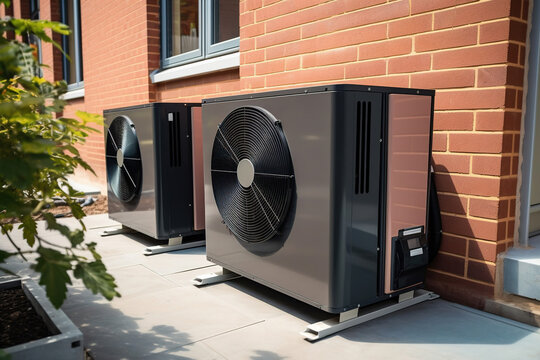Air conditioning is one of the biggest energy consumers in the home. Fortunately, smarter cooling solutions and greener energy sources make it possible to stay cool without paying an arm and a leg for your electricity bill.
Start by adjusting your thermostat. Keeping it at 78 degrees Fahrenheit is ideal for saving money and staying comfortable.
Install a Programmable Thermostat
By adjusting the temperature of your house to your schedule, a programmable thermostat can help you save money on your air conditioning costs. With this thermostat, you may save up to 10% on your energy bills.
To install a programmable thermostat, turn off the power (circuit breakers) to the furnace/air conditioner and the wall thermostat. Remove the existing thermostat and carefully mark the wall where you want to mount the new one. If the new thermostat will be placed directly above a window, consider blocking the sun with curtains or using an exterior solar shade.
Once you’ve checked the location for the new thermostat, please read the instructions that came with it and follow them to replace the faceplate. Screw the new backplate onto the wall, connect the wires, and finish installing the thermostat. Most of the time, a programmable thermostat is already labeled as to which wires connect to which terminals. If you still need to, you should be able to match up the wires based on the photo on the old thermostat.
Commit to Regular Maintenance
Like a car or a lawnmower, your air conditioner requires regular maintenance to perform at its best. An AC repair and service in Garland can fix any issues with the inner workings that may be causing it to work harder and use more energy. Many companies offer annual or bi-annual service plans, including priority scheduling, repair discounts, and other perks.
Adopting innovative energy practices, such as shutting off lights and unplugging electronics when not in use, can reduce your cooling monthly expenses by a few dollars. And, if you have room for it, consider planting shade trees that will help keep your home cooler by blocking direct sunlight.
Finally, if you’re having trouble lowering your electric bills, consider asking your power company for a home energy audit. They can help you identify areas where cool air leaks through leaky doors and windows, poor insulation, or spotty ductwork. This will help you reduce your air conditioning expenses all year.
High-Efficiency Air Conditioners
The older air conditioners that many homeowners still have in place are less efficient, and that’s not for your energy bill. Installing a newer model with higher SEER ratings can help reduce your energy costs. Look for models with two-stage motors operating at high and low speeds. That allows them to cool your home quickly but lower their output as the temperature decreases, reducing the need for repeated cycling.
Also, consider using ceiling fans, which operate at just 1 cent per hour to run and can help spread cooling throughout your home, lowering the amount of work your AC has to do. Just direct them so they blow counterclockwise to move air toward your walls and away from windows.
Finally, be sure to turn off appliances and lights when not in use, as they generate heat that your air conditioner has to work harder to offset. Unplugging devices intended to be on can also shave dollars off your electricity bill.
Improve Insulation
The proper insulation in your home helps to regulate the temperature and keep cool air inside. Insulation also dampens outside noise, controls humidity, and improves indoor air quality by blocking pollen from entering your home. The EPA recommends adding additional insulation in the attic to prevent hot air leakage and reduce cooling costs.
For older homes, a professional home energy assessment can help you find the best solution to improve your home’s insulation. Draught-proofing, cavity wall insulation, and double glazing are great options to reduce heat loss in your home.
Other home insulation solutions include installing a door snake or weather strip and adding bulk underfloor insulation. These inexpensive DIY solutions are an effective way to stop conditioned air from escaping, and they’re ready for homeowners to install. Gaps around windows and doors are another source of heat loss; insulating these areas will help to stop cooled air from escaping and warm air from coming in. Additionally, you can hang curtains that block out room-baking sunlight, reducing the need for your AC to work as hard.
Utilize Natural Ventilation
In addition to caulking and weather-stripping, natural ventilation systems like swamp coolers in dry climates or ductless heat pumps in all climates can help with energy savings. The key is to reduce air leakage in and out of your home. This is accomplished by performing a thorough visual inspection and sealing cracks and gaps. This includes windows and doors and the smallest openings, such as those around electrical outlets.
Using the temperature difference and buoyancy, cool air enters through lower-level windows, absorbs heat, rises, and exits through upper-level windows on the downwind side.
Other strategies to consider include minimizing heat-generating appliances, such as ovens and dryers, during the day, shading exterior walls with trees and light-colored materials on building facades, and utilizing ceiling fans in occupied rooms. These practices can help keep your AC costs down and ensure the system operates at peak efficiency.
